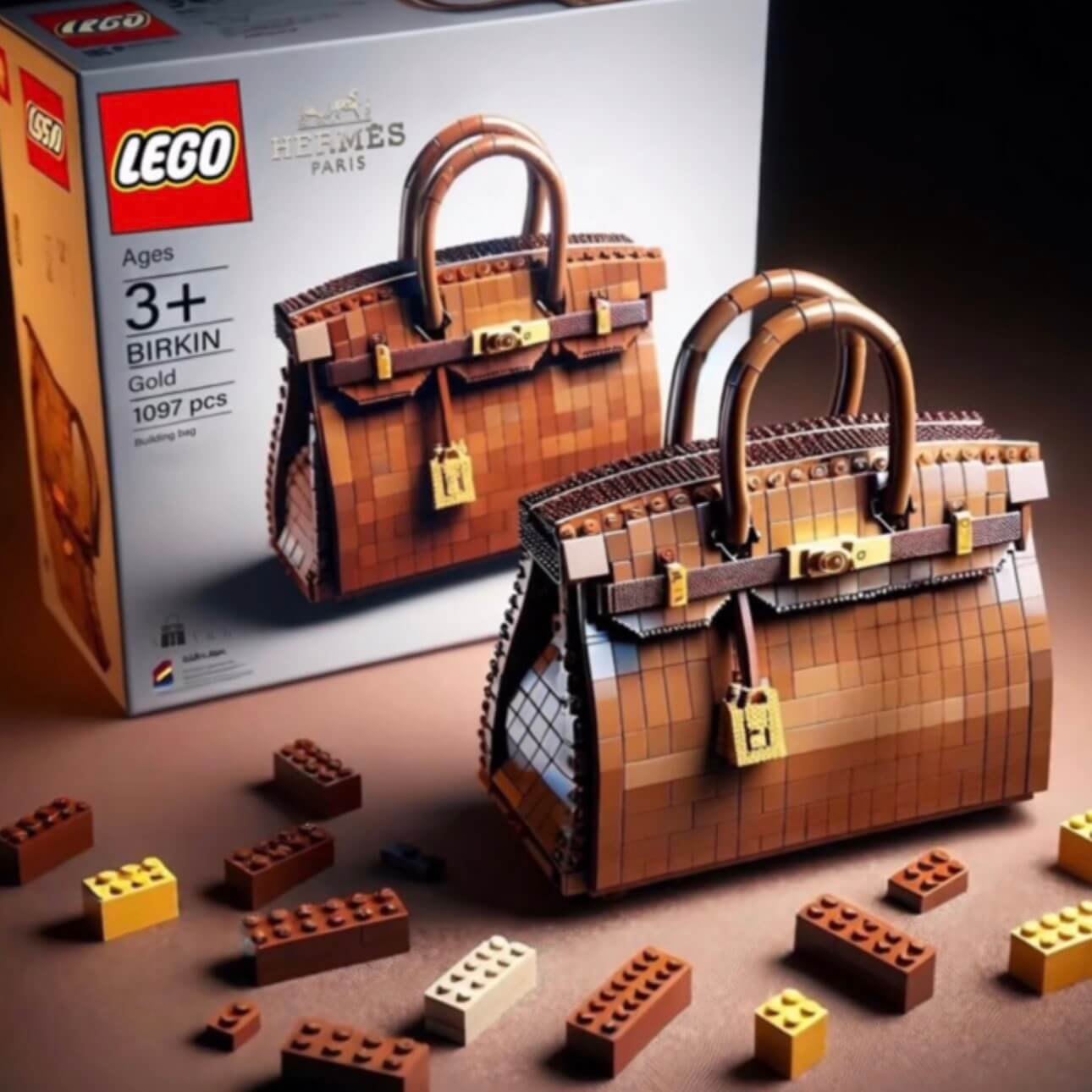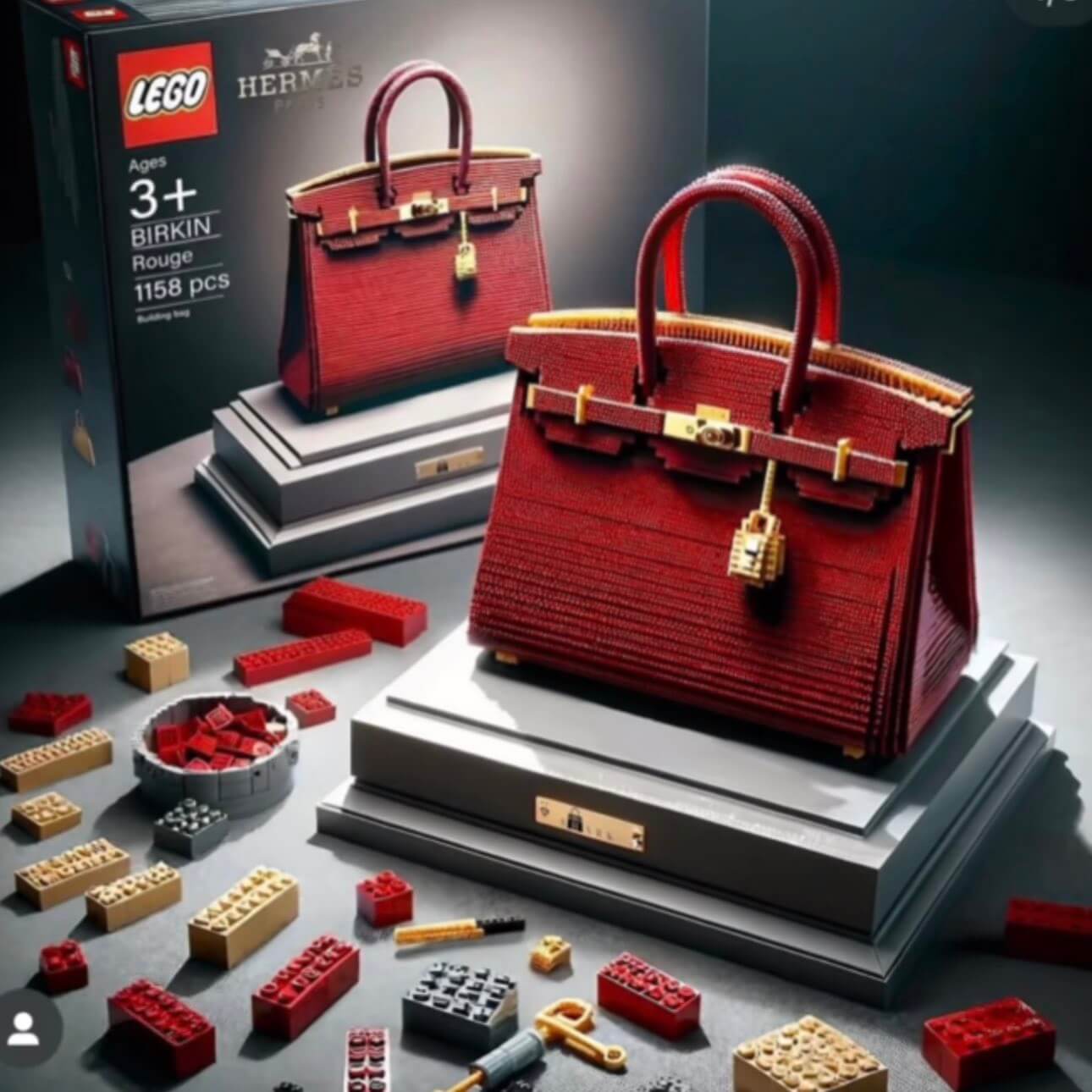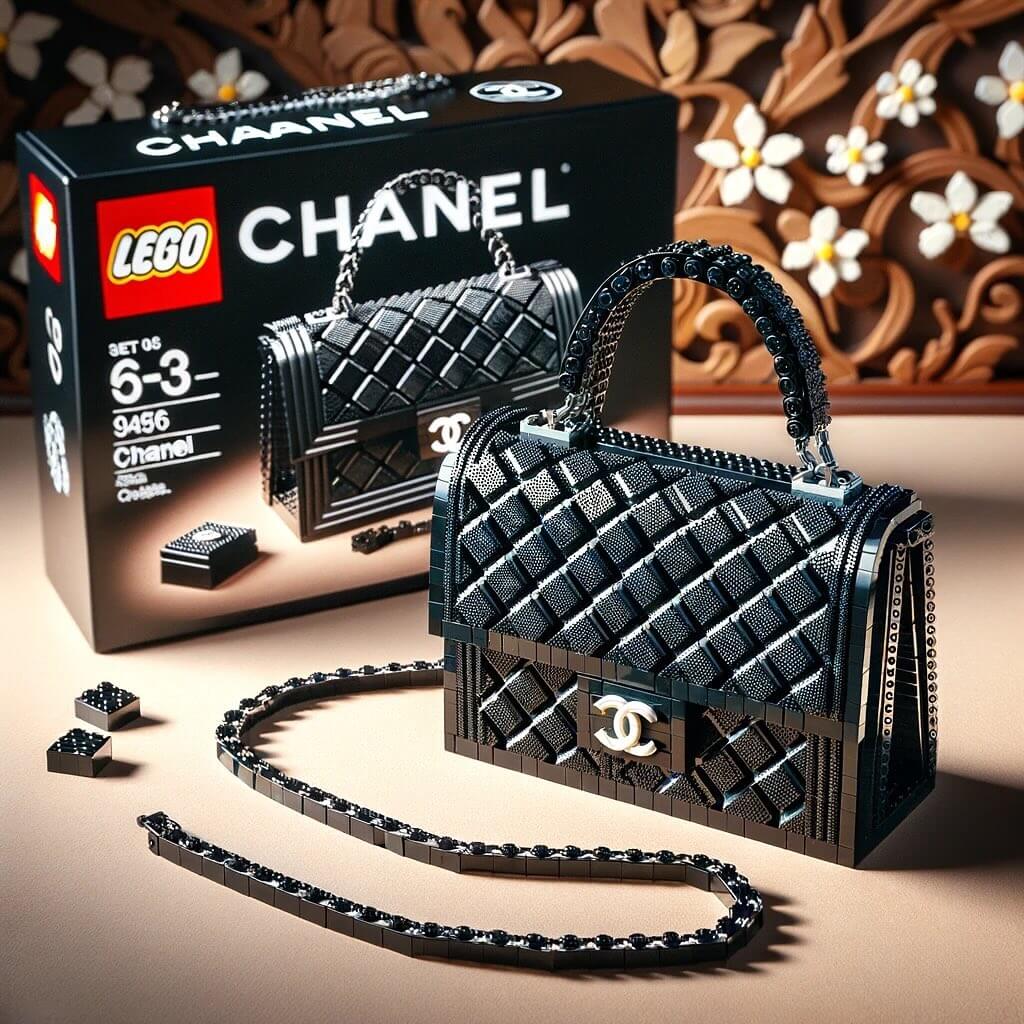The Faux Fashion Frenzy: Luxury Brands and LEGO’s Imaginary Collaborations Take the Internet by Storm

Last month, a viral sensation shook the internet to its core – an imaginative collaboration between Hermès and LEGO Group, resulting in a LEGO version of the iconic Birkin Bag. The twist? It’s entirely fictional, a product of generative AI and user-generated content (UGC) that has given birth to a trend fusing high-end fashion with the playful charm of childhood toys.

The playful trend doesn’t stop at Hermès; it extends its creative tendrils to include other fashion giants. Picture Chanel’s iconic Flap Bag and Dior’s sophisticated designs reimagined with LEGO’s whimsical touch. These AI-generated concepts exemplify a growing trend, sparking excitement and conversations about the boundless creative possibilities within the realm of high fashion.

Source: @glam.tol
What’s truly captivating about this phenomenon is the power of generative AI combined with UGC. The Hermès x LEGO Birkin Bag is a prime example, showcasing how ideas, even if fantastical, can captivate audiences worldwide. This imaginary collaboration set the stage for discussions, reactions, and even a touch of confusion as people tried to discern its authenticity.

Source: @glam.tol
The allure of these viral images lies in the seamless blend of a beloved luxury brand with an iconic childhood toy. The concept was so compelling that reactions ranged from sheer excitement to humorous musings about finally affording a Birkin or a Kelly bag.

Burberry Lego generated by AI
What makes this collaboration genuinely remarkable is that neither Hermès nor LEGO invested any money in product development or market research. This was a pure manifestation of user-generated content, creating organic hype that benefited both brands. It served as a window into what might genuinely excite their communities if such a collaboration were to materialize.

Another inspiration – Chanel. Source: @glam.tol
This incident highlights the future of marketing, where AI tools generate campaign ideas that not only expand audiences but also engage communities in meaningful ways. The essential role of community managers becomes increasingly evident in elevating and sustaining the impact of AI-generated concepts.

Dior by AI. Source: @glam.tol
Moreover, it raises intriguing questions about the evolving landscape of marketing. Is manufacturing virality becoming a new trend? The Hermès x LEGO Birkin Bag episode suggests that, sometimes, the community can excel at creating viral content even more effectively than the brands themselves. It signifies a shift towards a more participative, imaginative, and engaging form of marketing that resonates with today’s digitally connected audience.

Versace by AI. Source: @glam.tol
As we reflect on this viral sensation, one burning question remains – if the Hermès x LEGO Birkin Bag were real, would you be rushing to buy it? It’s a fascinating intersection of luxury and nostalgia, where a fashion statement meets a nod to childhood, leaving us all in anticipation of what the future holds for imaginative collaborations in the world of high fashion.

Source: @glam.tol

